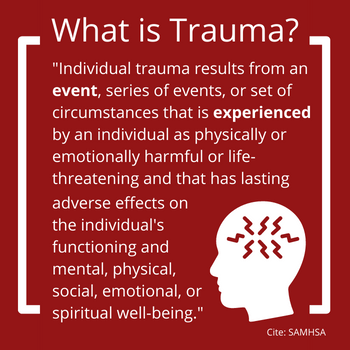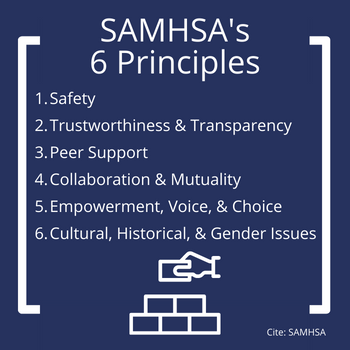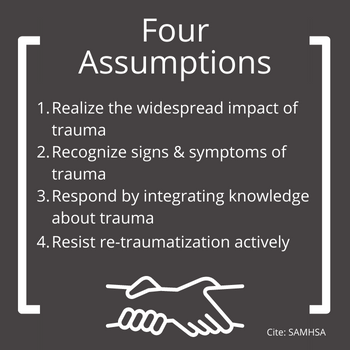Why include trauma-informed care in public safety?

Traumatic events weigh heavily on individuals, families, and communities. While many individuals may not experience long-term effects from a traumatic experience, trauma has the potential to impair healthy development and put individuals at higher risk for chronic physical and behavioral health disorders (SAMHSA, 2014).
But first responders can play a key role in the trauma cycle. When individuals are connected and provided services and supports, they become better equipped to recover from traumatic experiences. First responders are often the first and only point of contact with individuals experiencing trauma, placing them in a unique position to assist individuals to begin to recover from traumatic experiences. Assisting individuals recover from (or cope with) their trauma experiences promises benefits for both the individual experiencing trauma and the community at large.
What can public safety agencies do?


Public Safety agencies can help individuals who have experienced trauma by making their organizations trauma-informed. This can be accomplished by building the principles of trauma-informed care into agency culture, policies, and practices.
In accordance with HB 2575, the Department of Public Safety Standards and Training (DPSST) is offering the following recommendations for agencies to improve interactions with individuals – both in the community and in their own organizations - who have experienced trauma. These best practices are based on the Substance Abuse and Mental Health Services Administration's (SAMHSA) concept of trauma and principles for a trauma-informed approach.
At DPSST, similar concepts to these can be found woven throughout our basic academy curriculums, as well as specific courses and trainings such as ADEPT and Procedural Justice. For more information about upcoming trainings, please review the DPSST catalog.
The four assumptions that guide SAMHSA's trauma-informed principles

Realization
Agencies and first responders need to work with the realization that trauma is a pervasive issue affecting individuals, communities, and organizations.
Recognition
Organizations need to recognize the signs and symptoms of trauma to aid in the treatment and recovery process.
Respond
Given the prevalence of individuals and groups experiencing trauma, an agency should respond by training all members within the organization on the best practices and policies to aid individuals who have experienced trauma.
Resist Retraumatization
Following best practices will mitigate re-traumatization by identifying and avoiding environments and behaviors that may be triggering for these individuals.